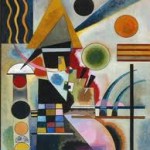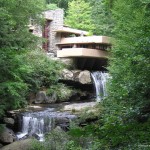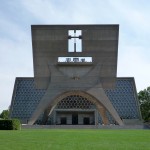Modernism is the term used to refer to a particular turn-of-the-century (ie late19th century to mid 20th century) art form. Here it signifies a break with codes of realism (appearance of the work of art no longer need have the appearance of reality). Thus, colors, shapes, materials of art are used in unusual combinations, distorted or exaggerated versions of the appearance of nature, in general a jolt to our scopic systems.
Below are notes Sujata has used in another class on the aesthetics of modernism:
SOME POSSIBLE TENETS OF MODERNISM
1. Use of colloquial, everyday, popular subjects and materials (think Marcel Duchamp).
2. Critique of illusionism (i.e., post-Renaissance notions of realism) think Picasso
3. Multiple points of view (negation of Renaissance perspective), think Cubism.
4. Shape and nature of human subjectivity and consciousness become the subject of art, think Dali.
5. Attention given to the role of the viewer in making the work of art and therefore to the sense in which the act of perception is creative, i.e., the viewer is active in the perception of the work of art. The issue of “creation” vs. “discovery” in art is crucial to any understanding of Modernism. We might generalize by saying that the change brought about by the Renaissance was in placing the viewer in a single, fixed, p.o.v. implying that “man” was the measure of all things. John Berger says, “Every drawing or painting that used perspective proposed to the spectator that he was the unique centre of the world. The camera — and more particularly the movie camera — demonstrated that there was no centre. The invention of the camera changed the way men saw. The visible came to mean something different to them. This was immediately reflected in painting. For the Impressionists the visible no longer presented itself to man in order to be seen. On the contrary, the visible, in continual flux, became fugitive. For the Cubists the visible was no longer what confronted the single eye, but the totality of possible views taken from points all round the object (or person) being depicted.” [p. 18, Ways of Seeing] For the Renaissance, perception was an act of seeing (discovering) of what is actually there. Modernism’s revolution lies in making the visible less absolute and more fugitive, pushing the viewer out of the center of the universe as the measure of all things. So in Modernism, perception is more an act of creation, because perception involves catching something that’s fugitive, grasping something that’s not entirely there or at least exists from multiple points of view, and this kind of perception, this notion of the visible, opens up the possibility that no one act of perception will be exactly like any other.
6. Celebration of the unconscious and its role in making art, think the Cabinet of Dr. Caligari.
7. Art making as a political act.
8. New notions of space and time, with particular attention to temporal elements such as movement, change, flux.
9. Emphasis upon the materials and processes of making art, i.e., the artistic medium itself becomes the subject of art and the resulting work is self-conscious, self-referential and self-critical. According to Stanley Greenberg: “The essence of Modernism . . . lies in the use of the characteristic methods of a discipline to criticize the discipline itself.” To put this another way, a one-to-one relation between nature and the art object is rejected in favor of art that is more self-referential; that is, more about itself as art than as a representation of nature.





